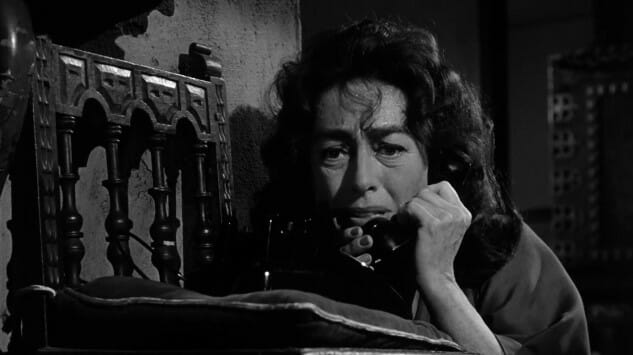The Best Horror Movie of 1962: What Ever Happened to Baby Jane?

This post is part of Paste’s Century of Terror project, a countdown of the 100 best horror films of the last 100 years, culminating on Halloween. You can see the full list in the master document, which will collect each year’s individual film entry as it is posted.
The Year
Another good year, at least compared to the doldrums of the early 1950s. Horror has pretty much established a baseline of quality here, where every year has enough releases—now coming from several different film markets, including Europe and Asia—that it always has a nicely varied pool to draw from. This year’s top few films fall more into the psychological thriller side of the spectrum, whereas other years are more dominated by gothic horror, monster movies, science fiction or the slowly emerging underground scene of more extreme, gore-forward horror.
The top picks for 1962 are a bit contingent upon whether you’d classify both What Ever Happened to Baby Jane? and Cape Fear as horror cinema. The first seems undeniable, featuring a mad-as-a-hatter Bette Davis serving her sister a dead parakeet and generally being completely unhinged. The latter is more of a discussion, but Robert Mitchum’s Max Cady certainly makes for a worthy horror villain and a logical continuation of The Night of the Hunter’s Rev. Harry Powell. One wonders if the horror elements of the film might have been played up even more if it had been directed by Alfred Hitchcock, as originally intended, rather than eventual director J. Lee Thompson.
Roger Corman is busy as ever in 1962, directing both Tales of Terror and Premature Burial, both continuing to draw on the name of Edgar Allen Poe. The latter is an odd outlier for the fact that it stars Ray Milland rather than the persistent Poe vessel of Vincent Price, but Price makes up for it by appearing in all three stories of anthology film Tales of Terror. I have a particular soft spot middle story “The Black Cat,” which sees a shabby, drunken Peter Lorre, in one of his last film performances, running circles around a snooty Price in a wine-tasting competition, before gleefully sealing him up alive in a loose adaptation of Poe’s “The Cask of Amontillado.” The two would appear together once more, in 1963’s The Raven, from … yeah, it’s Corman again. Who else?
Other notable entries for 1962 include the effectively minimalist, Twilight Zone-reminiscent Carnival of Souls, the only feature film from director Herk Harvey, as well as yet another adaptation of The Phantom of the Opera, this time from Hammer. And finally, we should note mad scientist flick The Awful Dr. Orloff, one of the first films from the prodigiously prolific Jesús Franco, which is generally credited as being Spain’s first proper horror film. As this decade goes on, both the Spanish and Italian horror markets will often become horror’s leading edge, especially when it comes to pushing the boundaries of “good taste.”
1962 Honorable Mentions: Carnival of Souls, Cape Fear, Night of the Eagle, Tales of Terror, Premature Burial, The Awful Dr. Orloff, The Phantom of the Opera
-

-

-

-

-

-

-

-

-

-

-

-

-

-

-

-

-

-

-

-

-

-

-

-

-

-

-

-

-

-

-

-

-

-

-

-

-

-

-

-








































